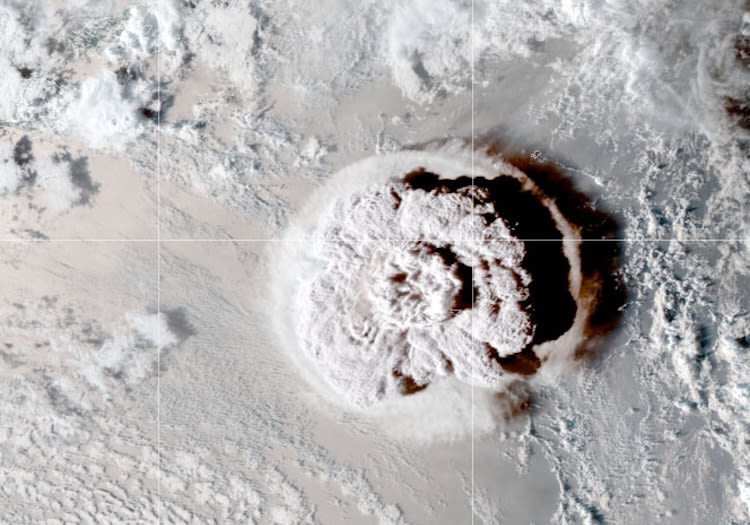
The eruption of the underwater Hunga volcano emitted the highest plume of ash ever recorded-an event that was visible from Earth-observing satellites. Photo courtesy NOAA
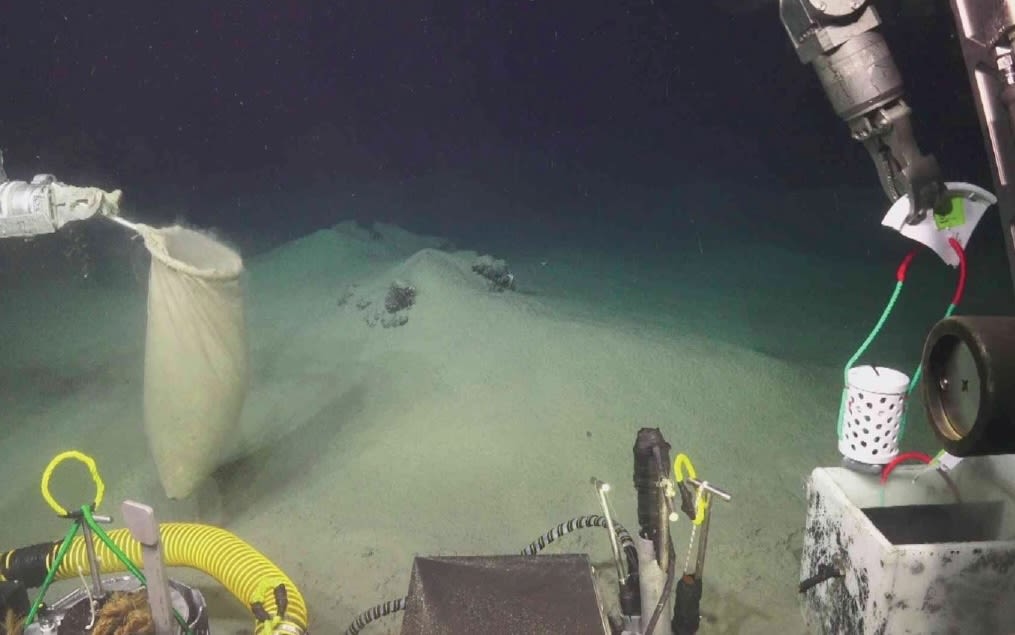
Upon discovering ash from the volcano on the seafloor during a marine biology cruise, researchers collect samples using every available item on board. Photo courtesy OIMB
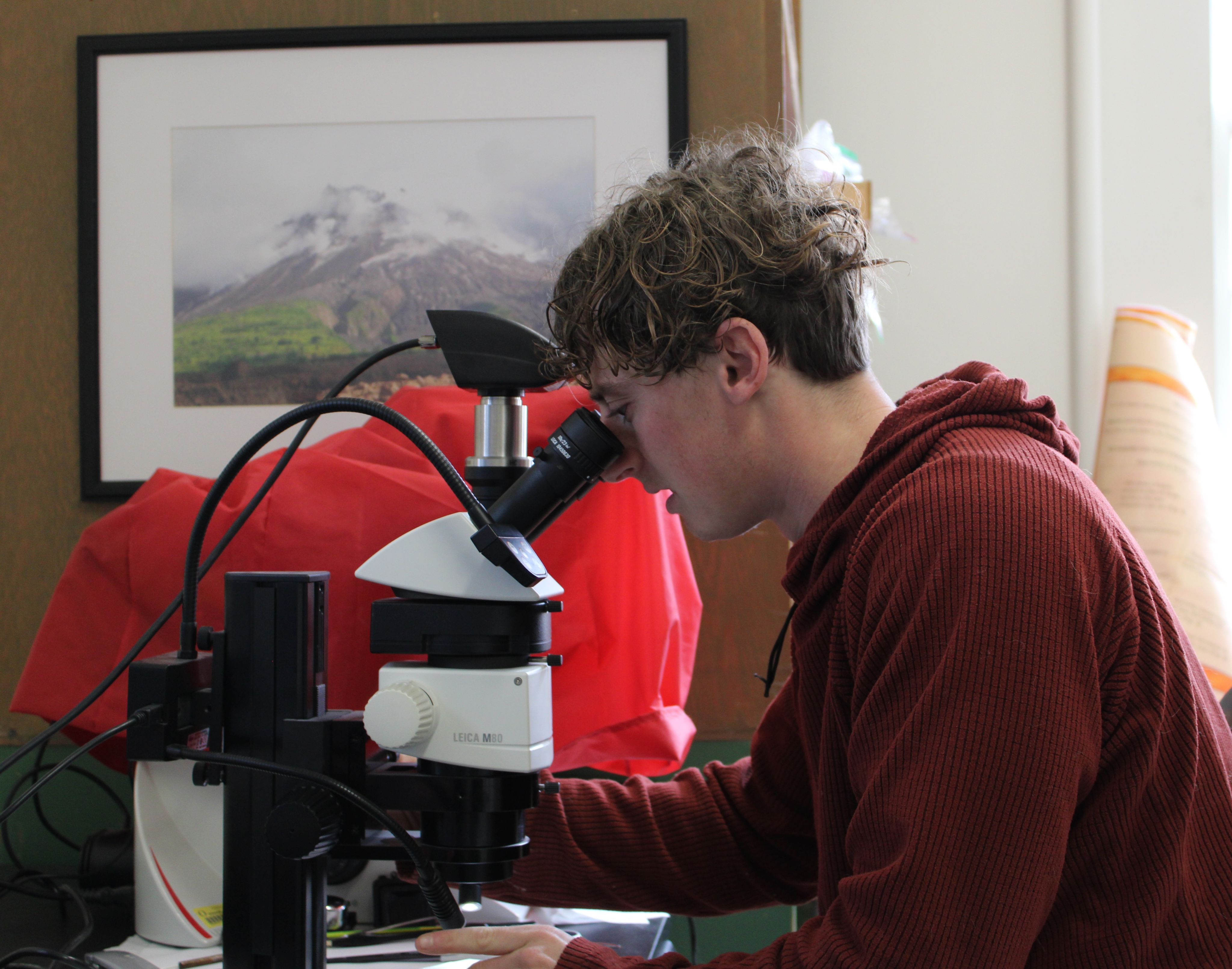
Graduate student Marcus Chaknova uses a microscope to examine volcanic ash samples collected from the seafloor. Photo by Leo Brown
Deep below the surface of the ocean, bacteria and critters that feed off nutrients spouting from hydrothermal vents met with a sudden wave of volcanic sediment, leaving them suffocated.
Four months later, Marcus Chaknova, then a marine biology and geology major in the University of Oregon College of Arts and Sciences, stumbled across the massive deposits of ash sediment while on a research cruise with the UO's Oregon Institute of Marine Biology, the University of Rhode Island and Western Washington University.
Deposited in 2022 when the underwater Hunga volcano spewed a 37-mile plume into the atmosphere-the biggest eruption seen in the modern satellite era-the seafloor ash provided a unique opportunity to study the impact of sediment movement on deep-sea life.
"This was an extremely rare opportunity," says Chaknova, now a graduate student in the Department of Earth Sciences. "Observing the mass movement of underwater sediment is something that hasn't been studied much."
With help from Earth sciences Professor Thomas Giachetti and 16 other researchers from around the world, Chaknova analyzed the samples he collected and is now the lead author on a paper examining the geologic and biologic impacts of the transport of volcanic sediment-a substantial accomplishment for an early graduate student, Giachetti says.
Published in April by the American Geophysical Union, Chaknova's research shines a light on the implications of activities such as deep-sea mining, which can stir up sediment on the ocean floor.
Many researchers have contacted Chaknova trying to get their hands on his samples, Giachetti says.
"We had scientists from every single time zone you could think of," Chaknova says, adding that his research required expertise from people in geochemistry, micropaleontology, marine biology and other disciplines.
"I was really impressed with Marcus in terms of managing this huge crowd of scientists," Giachetti adds.
Tracing the movement of sediment
After collecting samples from the ocean floor, Chaknova's first task was to verify that the ash did indeed come from the Hunga volcano.
Located 40 miles from the main island of Tonga, a Polynesian archipelago in the South Pacific Ocean, the underwater volcano left a considerable amount of sediment washing up on the shores of islands over 100 kilometers away.
When a volcano spews its plume high into the atmosphere, it takes time for all the ash to fall back to earth and settle at the bottom of the ocean. As the ash drifts to the seafloor, wind and ocean currents push it farther and farther away from the initial eruption site.
"One grain of sediment will take weeks or months to reach the bottom of the ocean. It's like a leaf falling from a tree. Because of the wind, it might end up somewhere completely different."
Back on campus, Chaknova took his samples into the lab to analyze the composition of the fine grain dust and match it with sediment found next to the eruption site. The sediment varied in size and shape; some particles were razor-sharp, while others were smooth and spherical.
"In some places the deposit was very thick, like a meter to a meter and a half in thickness," Giachetti says. "Most of it is made of very fine grains, less than 100 microns. That's about the size of one of your hairs."
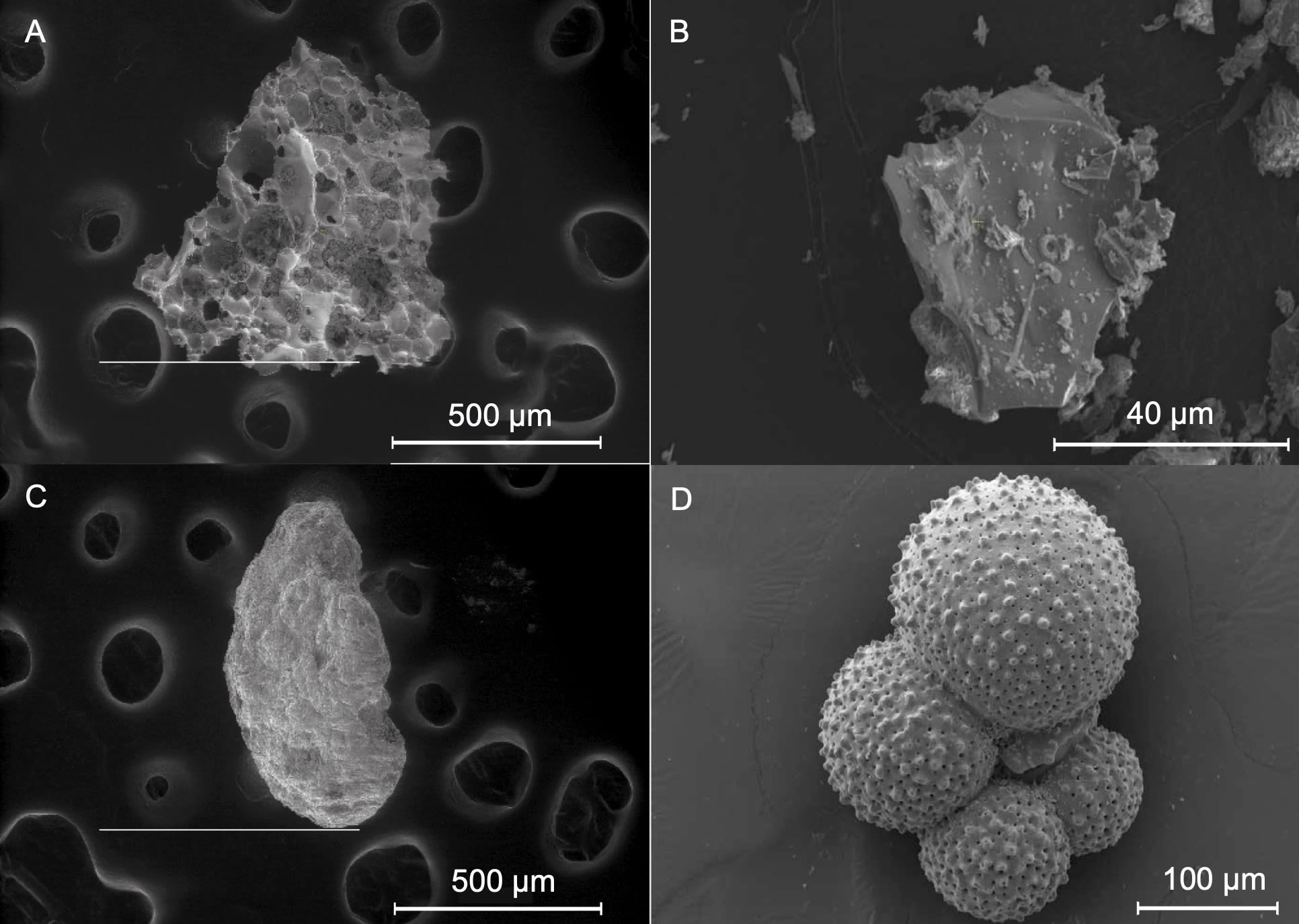
Chaknova found that most of the sediment came from the volcanic caldera's walls and flanks and was carried away by density currents, similar to an avalanche of snow in the Cascades during the winter.
The volcanic explosion released massive deposits of sediment and heat directly into the surface layer of the ocean. The sliding sediment was so powerful it broke several underwater cables, leaving tiny canyons on the seafloor, Giachetti says.
Researchers have used this information to determine the velocity of the surge, comparing the time of the eruption to the moment when power from the broken cables was wiped out.
Using computer programs to simulate the movement and dynamics of the ocean, Chaknova plans to map out the path of the fallen ash through the ocean. His future research could have major implications for how scientists look at the movement of volcanic ash in the ocean, Giachetti says.
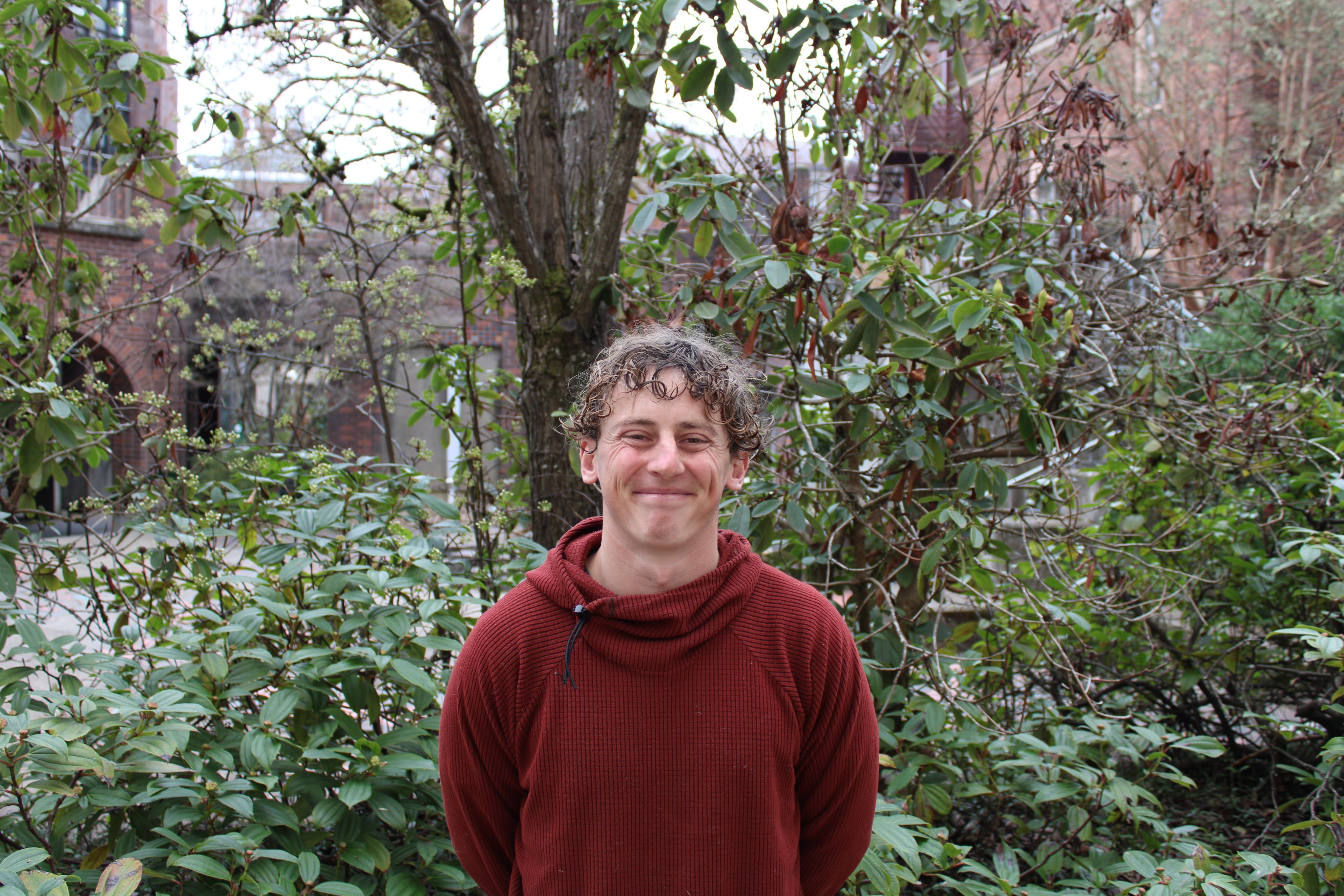
Image captions
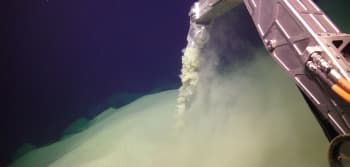 Image 1
Image 1Researchers use a robotic arm to collect ash samples from the seafloor.
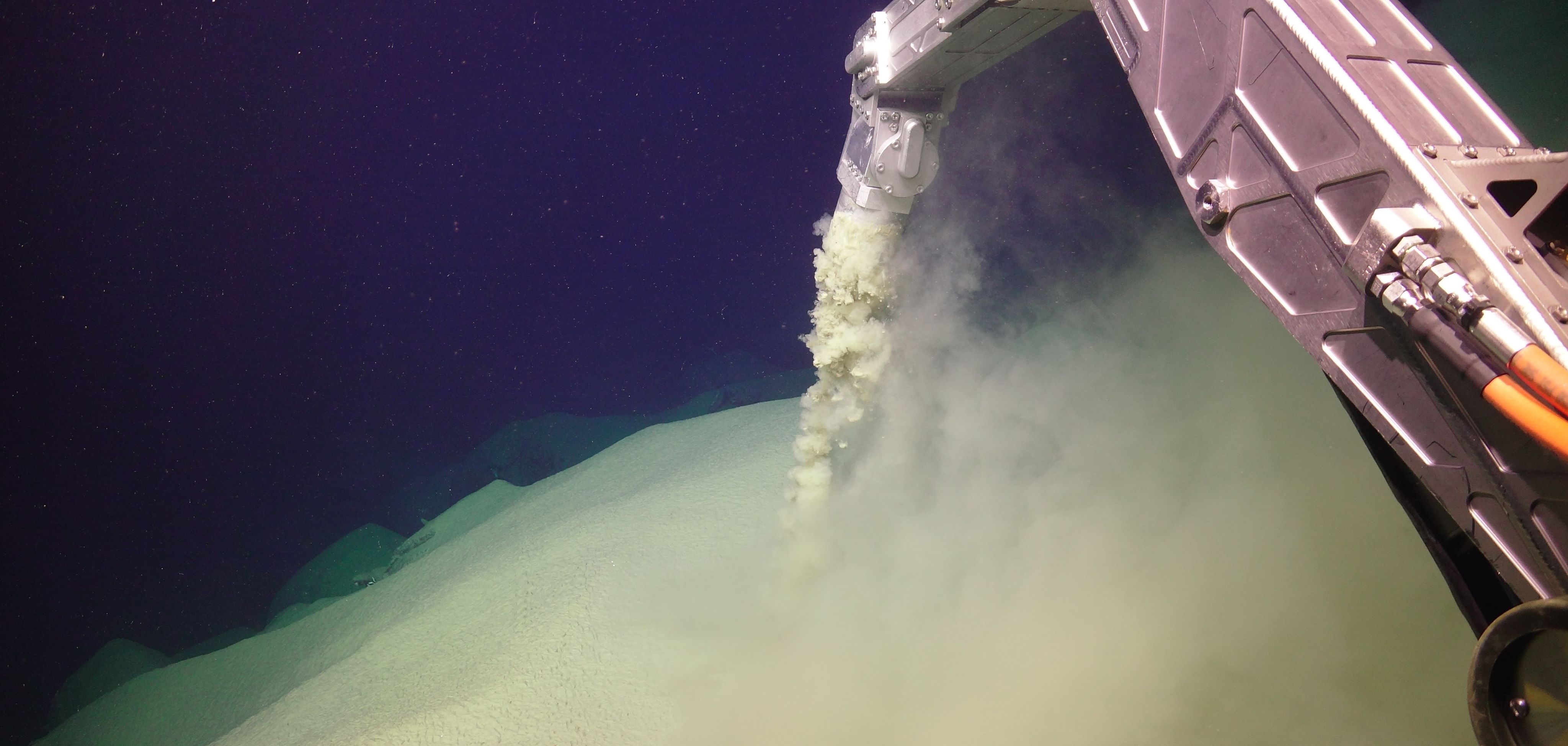
Researchers use a robotic arm to collect ash samples from the seafloor.
Researchers use a robotic arm to collect ash samples from the seafloor.
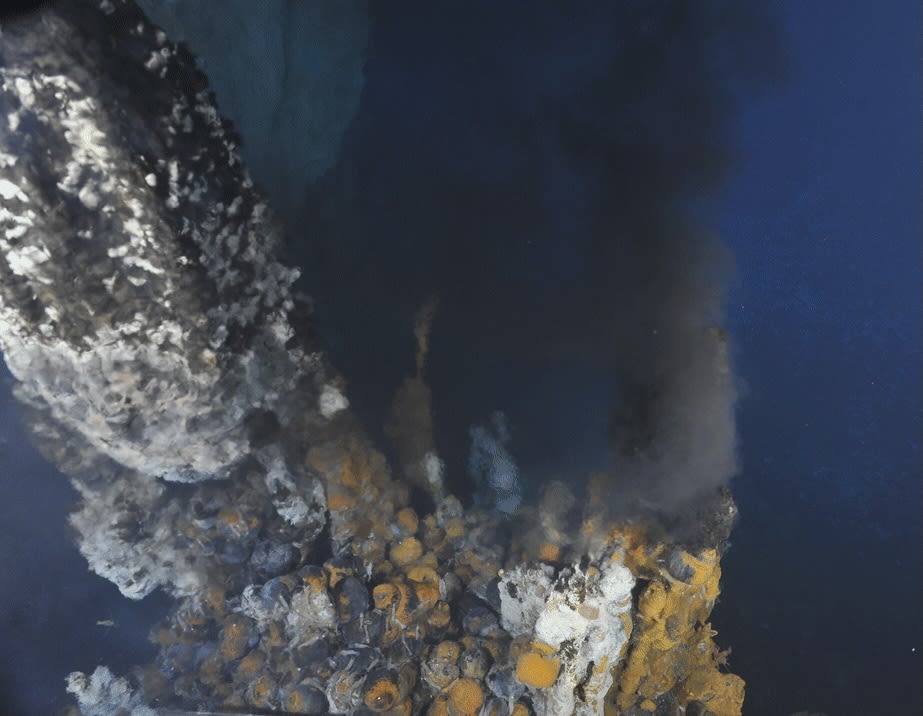
A 'black smoker' hydrothermal vent in the south Pacific Ocean spews hot, acidic, nutrient-rich fluid into the cold seawater. Photo courtesy USGS
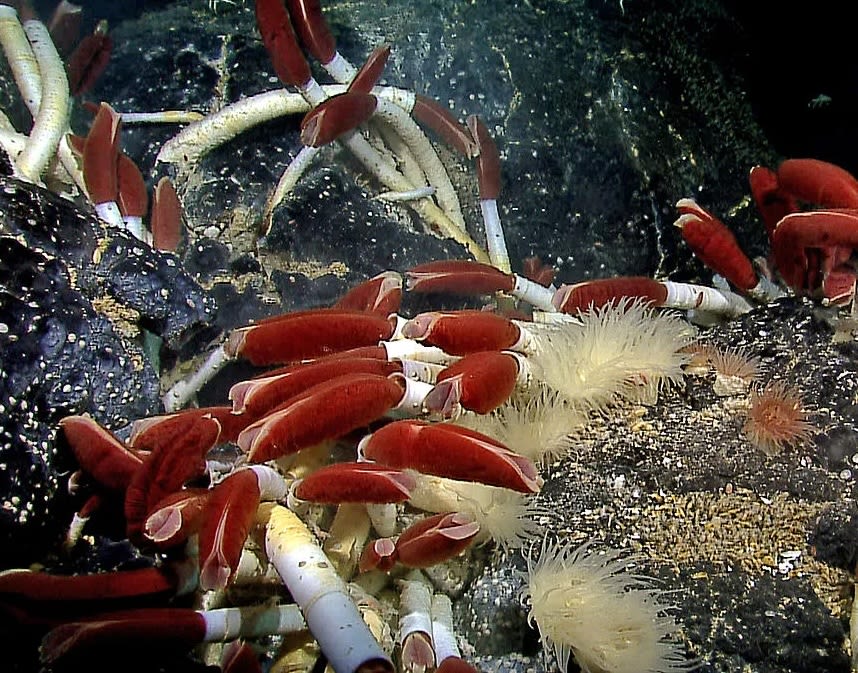
Because hydrothermal vents provide essential nutrients for deep-sea life, they can harbor entire ecosystems-including this giant tubeworm colony. Photo courtesy NOAA
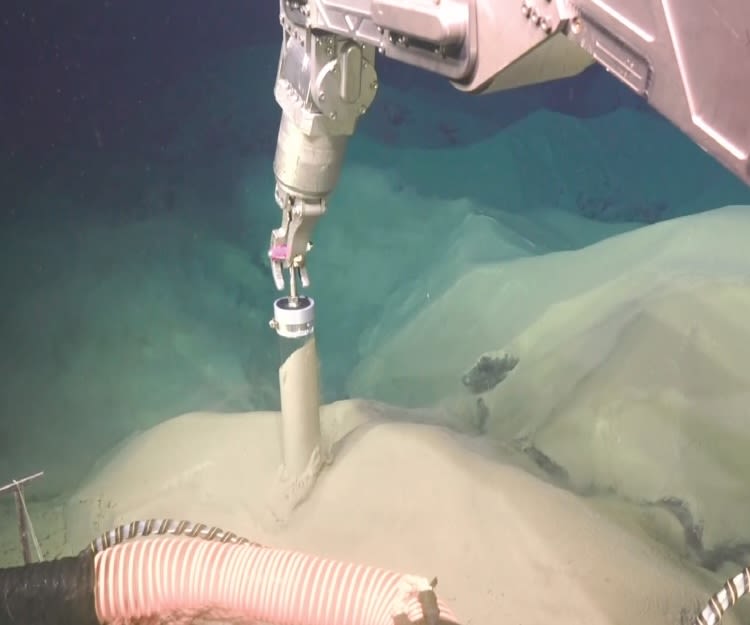
A remotely operated submarine collects samples of sediment from a large deposit of volcanic sediment, which buried deep-sea organisms in the south Pacific Ocean. Photo courtesy OIMB
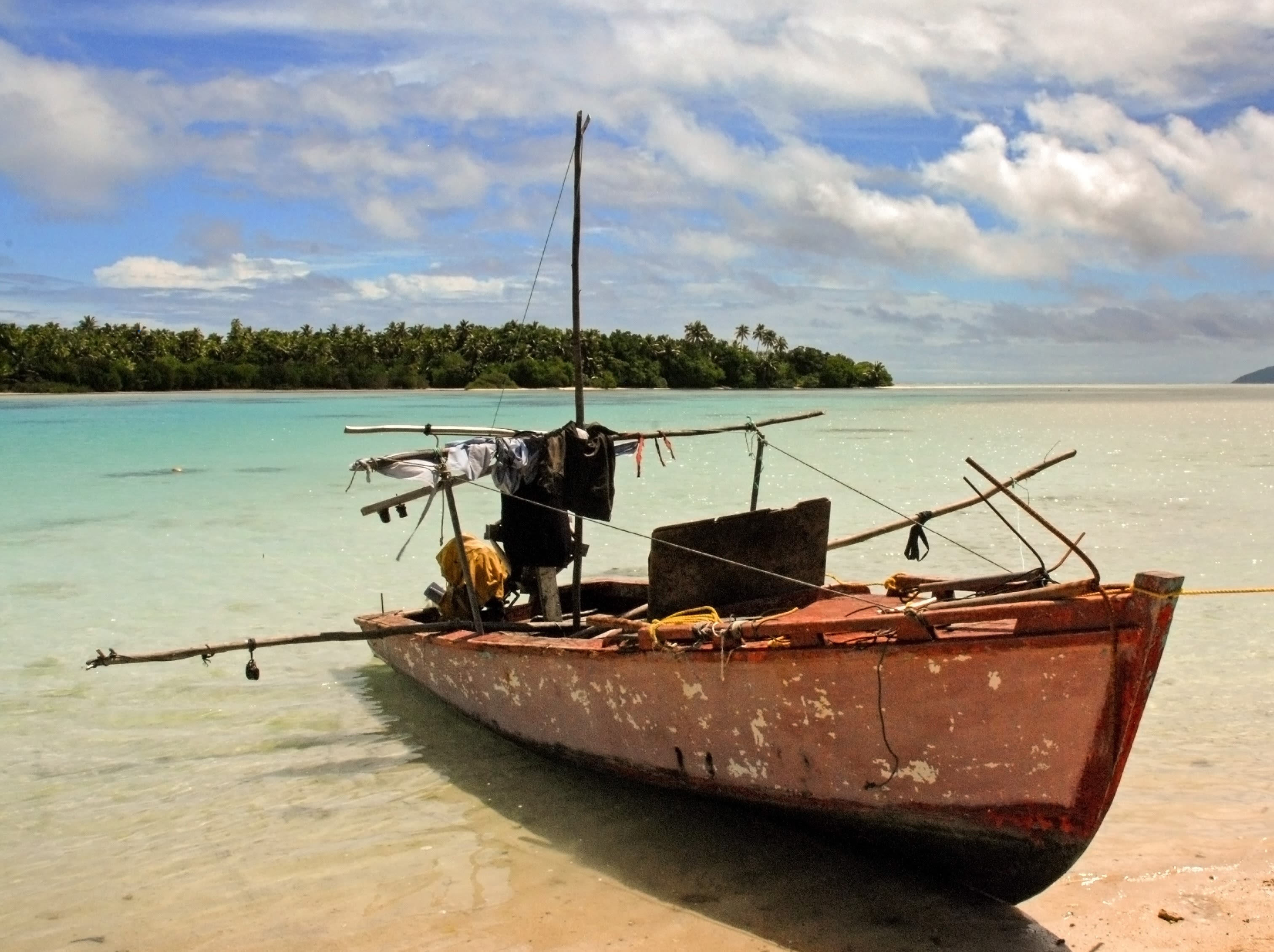
A fishing canoe in Niuatoputapu, Tonga.
Impact on seafloor organisms
In the deep sea, where sunlight can't penetrate, organisms on the seafloor lack enough energy for photosynthesis. Instead, deep-sea microbes use the methane or ammonia that seeps out of hydrothermal vents as a replacement for solar energy.
This process is called chemosynthesis-and recent research has shown that it's much more important for ocean biodiversity than previously thought.
About 90% of marine organisms live on the seafloor, according to the World Wide Fund for Nature.
After the eruption, these organisms were buried under layers of sediment, depriving them of the oxygen needed for respiration. Although mobile species like worms and anemones have shown an ability to emerge from deep burials, the rapid influx of ash proved too much for an escape.
Additionally, many of the species found on the seafloor are "suspension feeders," meaning they eat by grabbing organic debris suspended in the water and filtering it through their gills.
"With all the displaced sediment, these organisms are only grabbing sediment," Chaknova says. "That's going to clog their gills, it's going to clog their intestines, and that's going to have a dramatic effect on their ability to create energy."
Chaknova predicts that disruptions to natural patterns of life did not only occur on the deep seafloor. Volcanic ash from the eruption produced a bloom of life in the form of plankton at the sea surface. However, this ash eventually sank and was deposited on Tonga's coral reefs, as shown by the early results of Chaknova's attempt to trace volcanic ash through the ocean.
The ocean is a complex web of biodiversity, with energy being transferred throughout trophic levels. When primary producers or early-on consumer populations such as coral are affected, larger species are indirectly impacted. A disruption to Tonga's coral reefs from volcanic sedimentation could have a chain effect on the larger shallow-water trophic levels.
The eruption's impact extends beyond the ocean's biodiversity. According to the World Bank Group, subsistence fishing is a vital part of Tongan life; an estimated 82 percent of Tongan families are involved in reef fishing. Additionally, marine tourism makes up over 7% of the nation's gross domestic product.
"Although this eruption occurred on the seafloor, there is a chain of both positive and negative effects," Chaknova says.
"The negative effects go farther than just losing power or Wi-Fi from submarine cables. This is some people's livelihood. They need fish for food. Fishing is incredibly important for the economic and food security of Tonga."
While restrictions due to Covid prevented Chaknova from visiting the Kingdom of Tonga for his research, he was able to connect with Tongan scientists, including Taaniela Kula, who heads the Tongan Geological Services.
"Kula received all our data and samples," says Chaknova, who plans to continue using the volcanic samples to study underwater currents.
He stresses the importance of going a step farther than he has and avoiding what is known as "parachute science."
"That's when colonialist nations go to other nations with less scientific funding and do research without developing a mutualistic long-term relationship with scientists there," he says. "Developing an international scientific relationship is easy. Maintaining that relationship following the completion of said research is far more difficult."
Implications for the future
As the world shifts towards a greener future, so does the demand for the minerals used to produce things like renewable energy and electric vehicles. Massive deposits of metals like copper and cobalt can be found in potato-sized globes buried underneath the seafloor.
Many smaller Pacific Island nations like Tonga have been approached by private companies who present this as a huge opportunity for an economic boom.
"The area where we collected the sediment is within the kingdom of Tonga, and we found that they are very rich in minerals," Chaknova says. "A lot of companies are interested in collecting these minerals, and so this area that belongs to the Kingdom of Tonga will be up for bid in coming years for deep-sea mining."
Although deep-sea mining still hasn't been approved for commercial use, scientists and professionals from the Civil Society Forum of Tonga, the Tupou Tertiary Institute in Tonga and institutions around the world have voiced concerns that not enough research has been conducted to anticipate its potential impact on ocean biodiversity.
When extracting underwater minerals, the movement of material can create plumes of sediment that take a long time to settle. Much like a volcanic eruption, these plumes can clog gills and bury organisms.
Scientific papers like Chaknova's are crucial for understanding the potential effects of deep-sea mining on the movement of sediment-and the resulting impact on marine life, Giachetti says.
Image captions
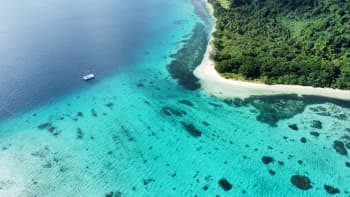 Image 1
Image 1Aerial view of an island in the Kingdom of Tonga.
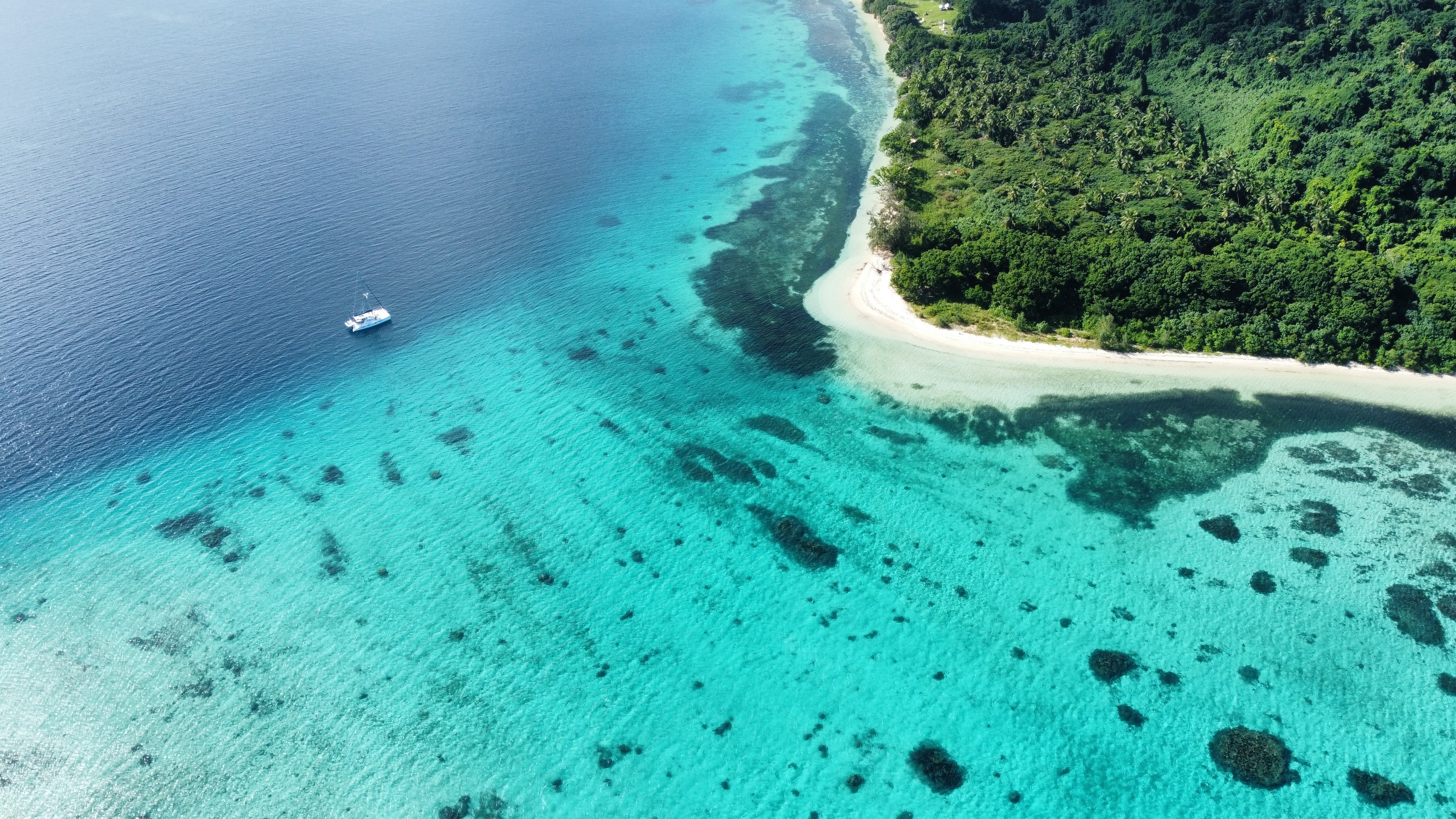
Aerial view of an island in the Kingdom of Tonga.
Aerial view of an island in the Kingdom of Tonga.






